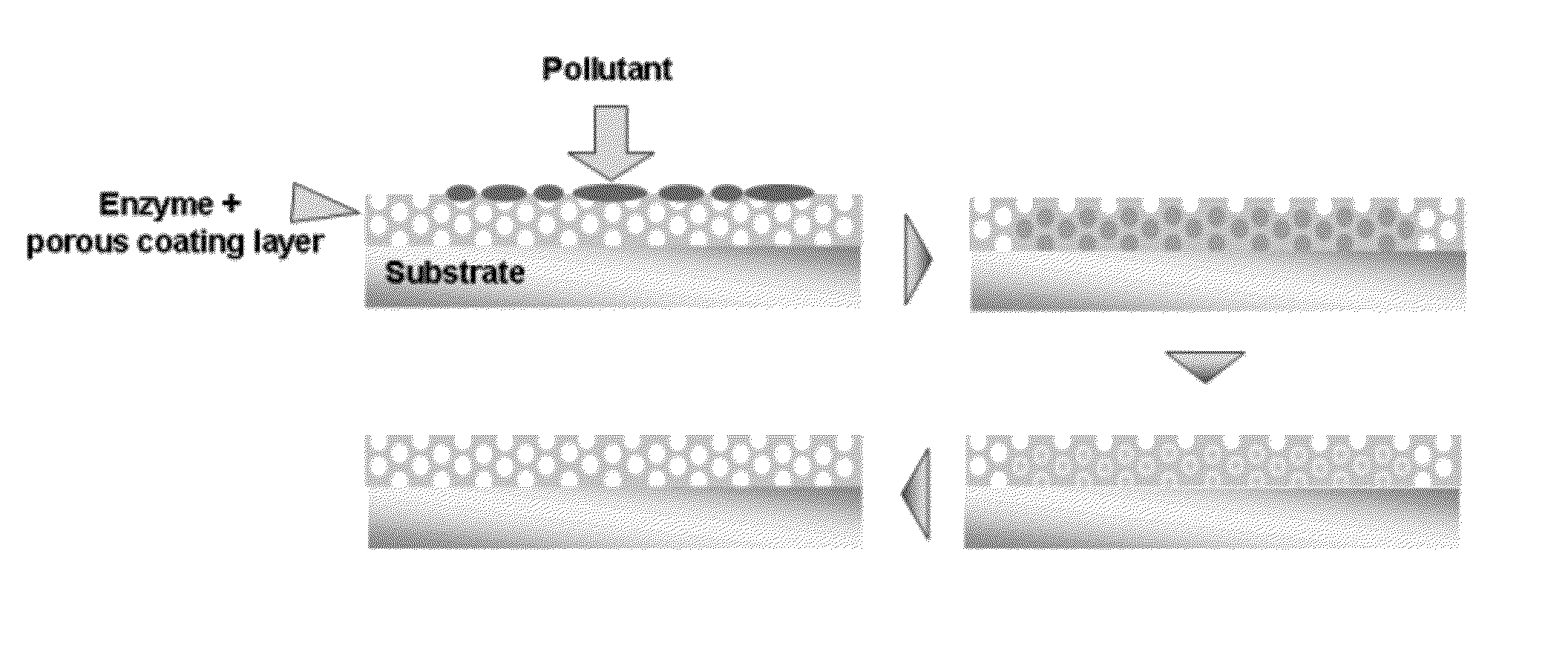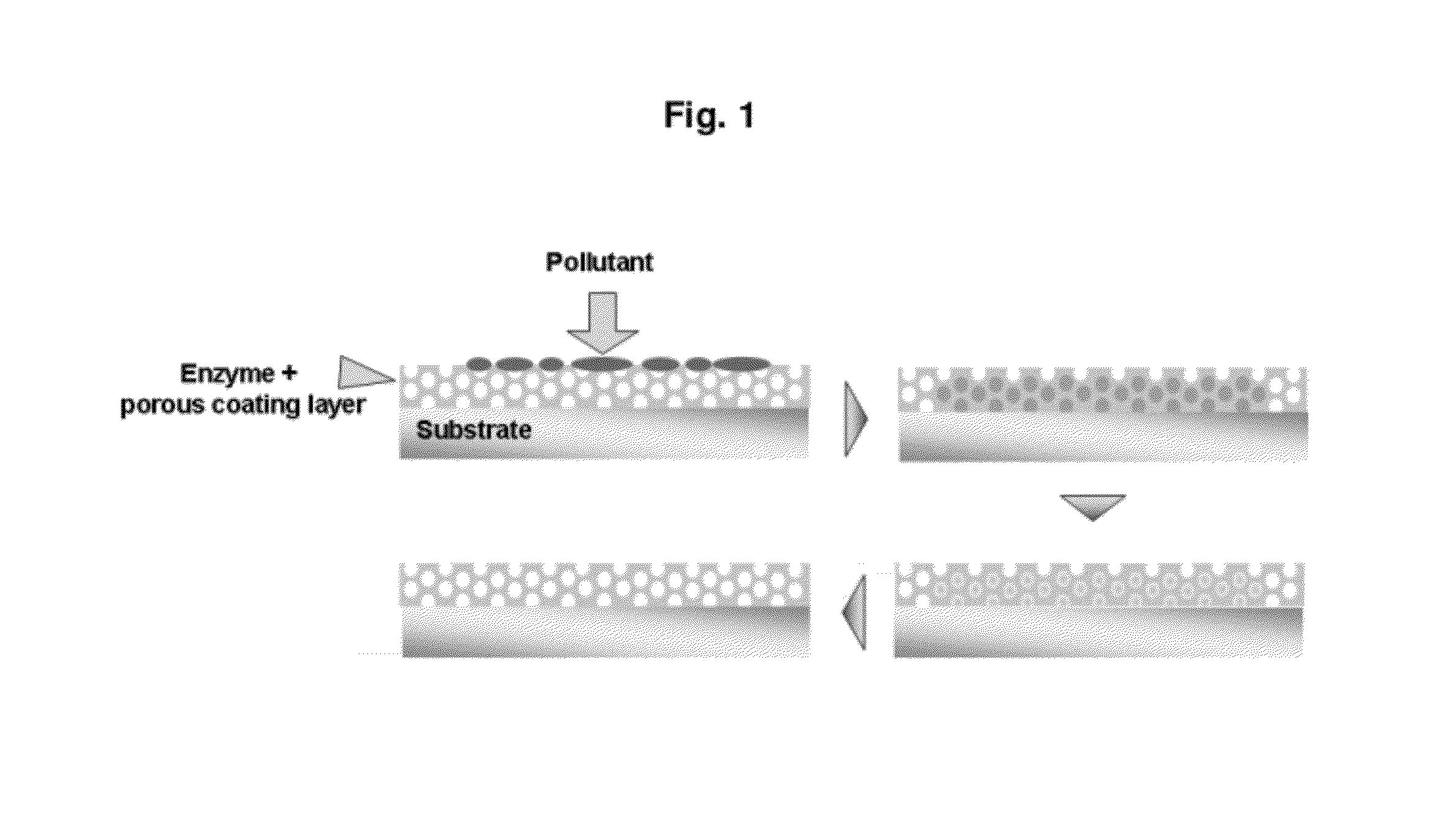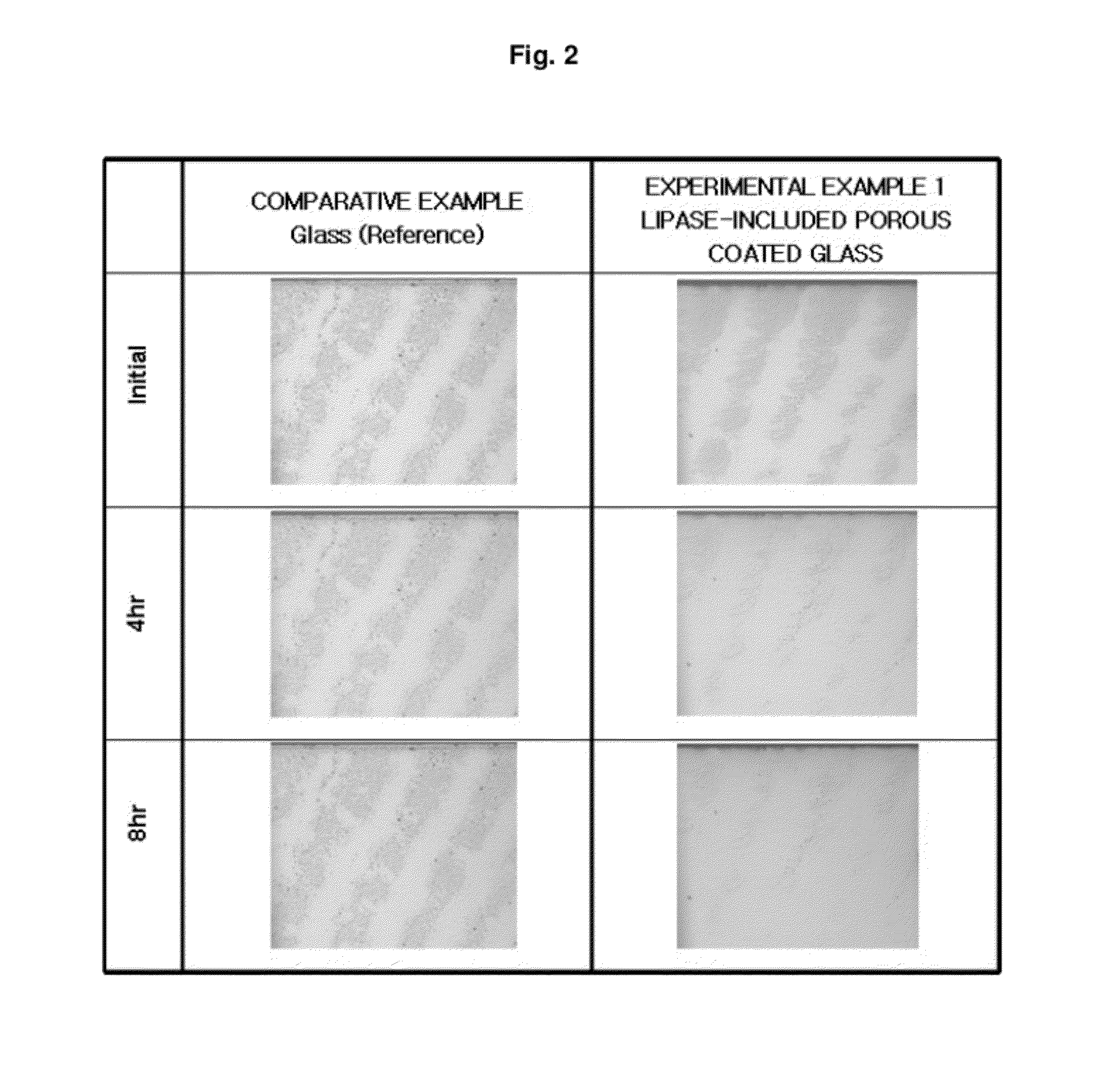Porous structure for forming Anti-fingerprint coating, method of forming Anti-fingerprint coating, substrate comprising the Anti-finger-print coating formed by the method, and product comprising the substrate
a porous structure and anti-fingerprint technology, applied in the direction of anti-reflective coatings, bandages, transportation and packaging, etc., can solve the problems of no technology actually realizing anti-fingerprint coatings, easy wiped contaminant on the surface, and external defects of products
- Summary
- Abstract
- Description
- Claims
- Application Information
AI Technical Summary
Benefits of technology
Problems solved by technology
Method used
Image
Examples
example 1
Preparation of Anti-Fingerprint Coated Film using Siloxane-Based Composition and Lipase
[0048]250 g of 3-glycidyloxypropyltrimethoxysilane, 100 g of tetraethoxysilane, and 146 g of methanol were stirred in a flask. 7.3 g of aluminum isopropoxide was added to the obtained mixture, and then stirred again until it became a clear solution. The stirred mixture was cooled to 25° C., and 80 g of citric acid aqueous solution having a pH of 2.5 was dropped and then reacted for several hours. In addition, an aqueous solution prepared of excesses of isopropyl alcohol and titanium isopropoxide, and a trace of acetic acid was reacted during reflow, thereby preparing an intermediate derivative of the titanium isopropoxide. After 60 g of the intermediate derivative of the titanium isopropoxide was added and then reacted for approximately 3 hours, 145 g of acetyl acetone was added and then sufficiently stirred. Afterwards, 200 g of colloid silica dispersed in methanol was added and then maturated fo...
example 2
Preparation of Anti-Fingerprint Coated Film using Composition for Hard Coating Agent Including Silica Particles and Lipase
[0051]A hard coating solution was prepared by uniformly mixing 7 wt % EB1290 (SK UCB Co., Ltd.) as a reactive acrylate oligomer, 29 wt % dipentaerythritol hexacrylate (DPHA) as a multifunctional acrylate monomer, 11 wt % silica dispersed solution (solid content: 30%) having an average particle size of 15 to 20 nm, which was prepared by dispersing silica particles in methyl isobutyl ketone and methanol, 9 wt % dimethyl formamide (DMF) and 12 wt % isopropyl alcohol (IPA) as solvents, 29 wt % of methyl ethyl ketone (MEK), 2 wt % IRG184 as an initiator, and 1 wt % BYK300 as an additive.
[0052]The prepared hard coating composition was coated on a PET film and then UV-cured, thereby preparing a porous structure on the PET film.
[0053]The slide glass was dipped in a PBS buffer having 100 mg / ml of a lipase (Amano Enzyme; Lipase PS “Amano” SD; 23,000 U / g), and then kept at ...
example 3
Preparation of Anti-Fingerprint Coated Film using Siloxane-Based Composition, Lipase, and Protease
[0054]A slide glass coated with the siloxane-based porous structure prepared as described in Example 1 was dipped in a PBS buffer having 50 mg / ml of a lipase (Amano Enzyme; Lipase PS “Amano” SD; 23,000 U / g) and 50 mg / ml of a protease (Novozymes; Esperase), and kept at 4° C. for 24 hours. Then, the slide glass was dipped in distilled water to be washed three times for 20 minutes, and blow-dried with nitrogen.
PUM
| Property | Measurement | Unit |
|---|---|---|
| thickness | aaaaa | aaaaa |
| structure | aaaaa | aaaaa |
| adsorption | aaaaa | aaaaa |
Abstract
Description
Claims
Application Information
 Login to View More
Login to View More - R&D
- Intellectual Property
- Life Sciences
- Materials
- Tech Scout
- Unparalleled Data Quality
- Higher Quality Content
- 60% Fewer Hallucinations
Browse by: Latest US Patents, China's latest patents, Technical Efficacy Thesaurus, Application Domain, Technology Topic, Popular Technical Reports.
© 2025 PatSnap. All rights reserved.Legal|Privacy policy|Modern Slavery Act Transparency Statement|Sitemap|About US| Contact US: help@patsnap.com



